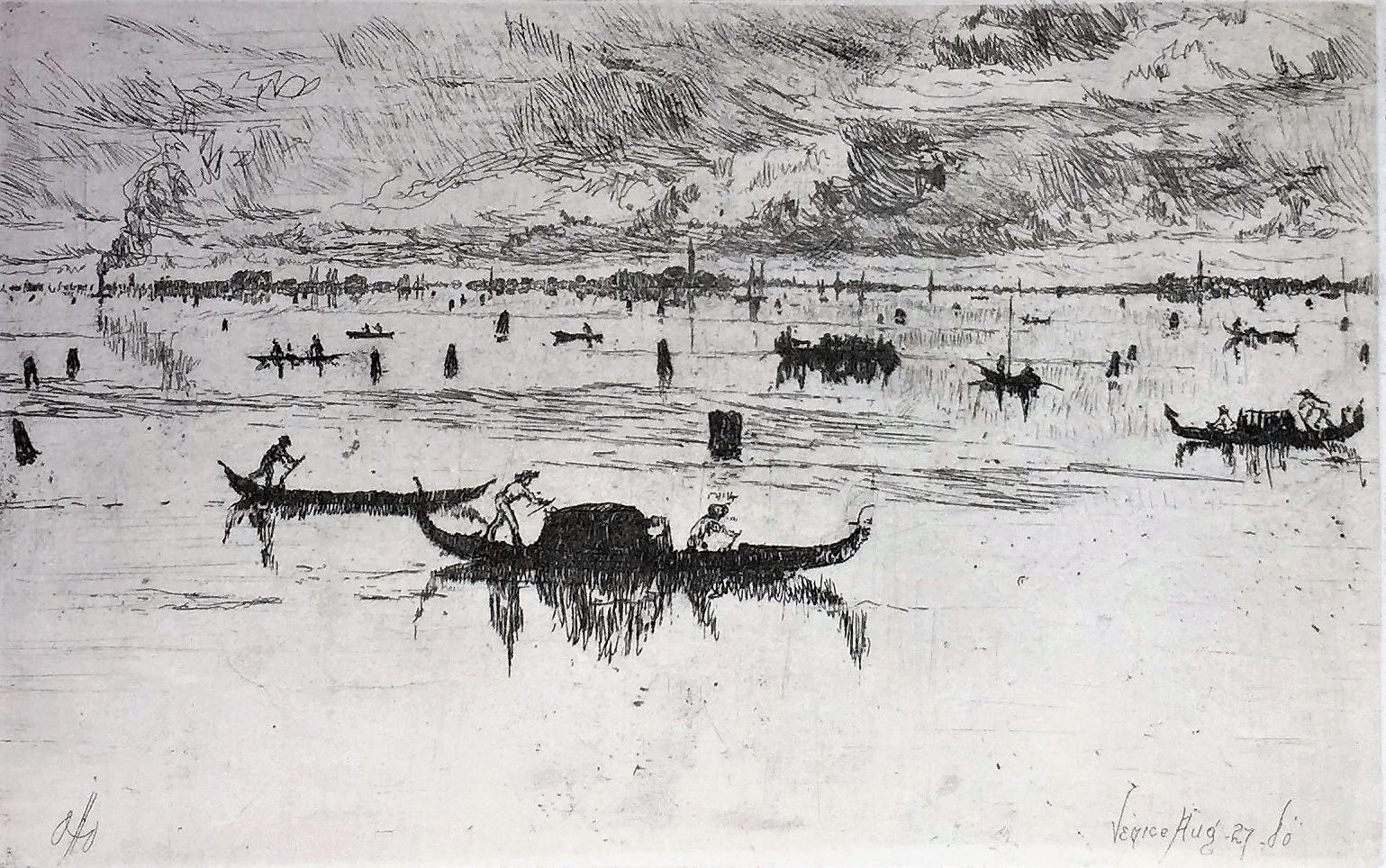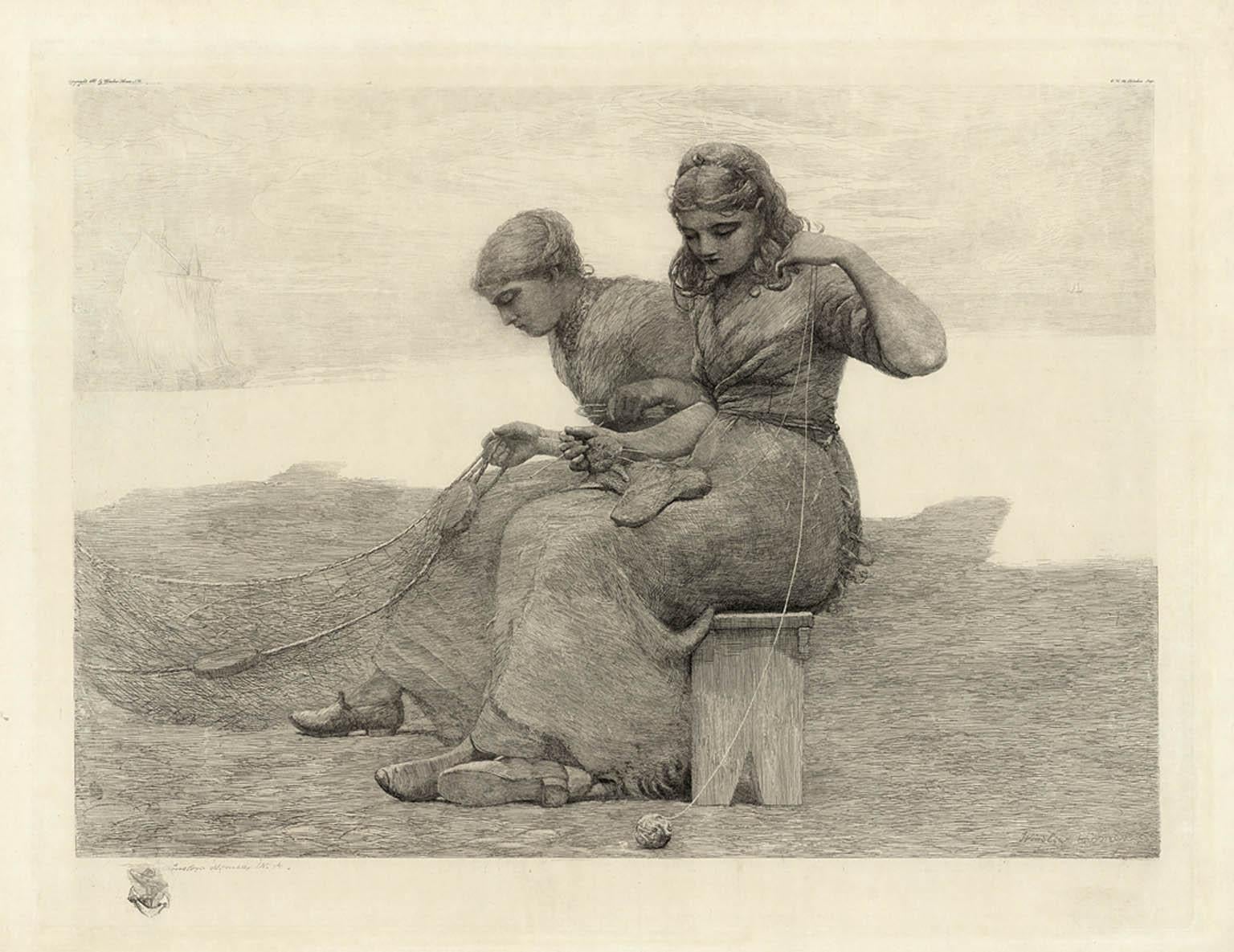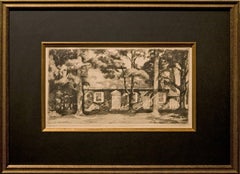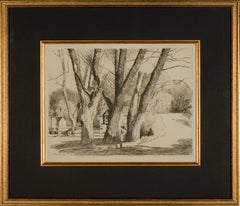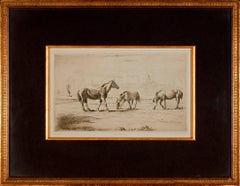
"Harmonville"
View Similar Items
Want more images or videos?
Request additional images or videos from the seller
1 of 5
Daniel Garber"Harmonville"c. 1925
c. 1925
About the Item
- Creator:Daniel Garber (1880-1958, American)
- Creation Year:c. 1925
- Dimensions:Height: 16 in (40.64 cm)Width: 20 in (50.8 cm)Depth: 1 in (2.54 cm)
- Medium:
- Movement & Style:
- Period:
- Condition:good condition Edition of 30.
- Gallery Location:Lambertville, NJ
- Reference Number:Seller: LAM00331stDibs: G14040537469
About the Seller
5.0
Vetted Seller
These experienced sellers undergo a comprehensive evaluation by our team of in-house experts.
Established in 1997
1stDibs seller since 2014
36 sales on 1stDibs
Typical response time: 6 hours
More From This SellerView All
- "Birmingham Meeting House"By Daniel GarberLocated in Lambertville, NJJim’s of Lambertville Fine Art Gallery is proud to present this piece by Daniel Garber (1880 - 1958). One of the two most important and, so far, the most valuable of the New Hope Sc...Category
1930s American Impressionist Landscape Prints
MaterialsEtching
- "Spring Valley Willows"By Daniel GarberLocated in Lambertville, NJJim’s of Lambertville Fine Art Gallery is proud to present this piece by Daniel Garber (1880 - 1958). One of the two most important and, so far, the most valuable of the New Hope School Painters, Daniel Garber was born on April 11, 1880, in North Manchester, Indiana. At the age of seventeen, he studied at the Art Academy of Cincinnati with Vincent Nowottny. Moving to Philadelphia in 1899, he first attended classes at the "Darby School," near Fort Washington; a summer school run by Academy instructors Anshutz and Breckenridge. Later that year, he enrolled at the Pennsylvania Academy of the Fine Arts. His instructors at the Academy included Thomas Anshutz, William Merritt Chase and Cecilia Beaux. There Garber met fellow artist Mary Franklin while she was posing as a model for the portrait class of Hugh Breckenridge. After a two year courtship, Garber married Mary Franklin on June 21, 1901. In May 1905, Garber was awarded the William Emlen Cresson Scholarship from the Pennsylvania Academy, which enabled him to spend two years for independent studies in England, Italy and France. He painted frequently while in Europe, creating a powerful body of colorful impressionist landscapes depicting various rural villages and farms scenes; exhibiting several of these works in the Paris Salon. Upon his return, Garber began to teach Life and Antique Drawing classes at the Philadelphia School of Design for Women in 1907. In the summer of that same year, Garber and family settled in Lumbertville, Pennsylvania, a small town just north of New Hope. Their new home would come to be known as the "Cuttalossa," named after the creek which occupied part of the land. The family would divide the year, living six months in Philadelphia at the Green Street townhouse while he taught, and the rest of the time in Lambertville. Soon Garber’s career would take off as he began to receive a multitude of prestigious awards for his masterful Pennsylvania landscapes. During the fall of 1909, he was offered a position to teach at the Pennsylvania Academy as an assistant to Thomas Anshutz. Garber became an important instructor at the Academy, where he taught for forty-one years. Daniel Garber painted masterful landscapes depicting the Pennsylvania and New Jersey countryside surrounding New Hope. Unlike his contemporary, Edward Redfield, Garber painted with a delicate technique using a thin application of paint. His paintings are filled with color and light projecting a feeling of endless depth. Although Like Redfield, Garber painted large exhibition size canvases with the intent of winning medals, and was extremely successful doing so, he was also very adept at painting small gem like paintings. He was also a fine draftsman creating a relatively large body of works on paper, mostly in charcoal, and a rare few works in pastel. Another of Garber’s many talents was etching. He created a series of approximately fifty different scenes, most of which are run in editions of fifty or less etchings per plate. Throughout his distinguished career, Daniel Garber was awarded some of the highest honors bestowed upon an American artist. Some of his accolades include the First Hallgarten Prize from the National Academy in 1909, the Bronze Medal at the International Exposition in Buenos Aires in 1910, the Walter Lippincott Prize from the Pennsylvania Academy and the Potter Gold Medal at the Art Institute of Chicago in 1911, the Second Clark Prize and the Silver Medal from the Corcoran Gallery of Art for “Wilderness” in 1912, the Gold Medal from the Panama-Pacific Exposition in San Francisco of 1915, the Second Altman Prize in1915, the Shaw prize in 1916, the First Altman Prize in 1917, the Edward Stotesbury Prize in1918, the Temple Gold Medal, in 1919, the First William A...Category
1940s American Impressionist Landscape Prints
MaterialsEtching
- "Old Barney"By Daniel GarberLocated in Lambertville, NJJim’s of Lambertville Fine Art Gallery is proud to present this piece by Daniel Garber (1880 - 1958). One of the two most important and, so far, the most valuable of the New Hope Sc...Category
Mid-20th Century American Impressionist Landscape Prints
MaterialsEtching
- "Improvidence"By Daniel GarberLocated in Lambertville, NJJim’s of Lambertville Fine Art Gallery is proud to present this piece by Daniel Garber (1880 - 1958). One of the two most important and, so far, the most valuable of the New Hope Sc...Category
1920s American Impressionist Landscape Prints
MaterialsEtching
- "Passing Storm, Long Beach Island, New Jersey"By Anthony Michael AutorinoLocated in Lambertville, NJJim’s of Lambertville is proud to offer this artwork. Signed lower left. Complemented by a hand carved and gilt frame. Anthony Michael Autorino (1937 - 2015) The son of Italian immigrants, Anthony Michael Autorino was born on September 29, 1937 in Montclair, New Jersey. As a teenager, Autorino enlisted in the United States Air Force where he served an eight-year tour. His expertise in the field of cryptography landed him in Paris in the mid-1950s as an Air Force sergeant working at the United States Embassy. While in Paris, Anthony became quite involved in the art community which reinforced his desire to make painting his career focus. Upon returning to the United States in 1961, Autorino divided time painting between upstate New York and New England. By the mid-1960s, New York City had become the center of activity for the career of this highly regarded young artist. By 1968, disillusioned by the hustle and bustle, Autorino made the decision to relocate. His passion for paintings nature and the outdoors led him to the Delaware Valley. Charmed by the welcoming art...Category
20th Century American Impressionist Landscape Paintings
MaterialsOil
- "Autumn Afternoon in Luxembourg Garden"By Martha WalterLocated in Lambertville, NJJim’s of Lambertville is proud to offer this artwork by: Martha Walter (1875-1976) Born in Philadelphia in 1875, Martha Walter attended Girls’ High School followed by the Pennsylva...Category
Early 20th Century American Impressionist Landscape Paintings
MaterialsOil, Board
You May Also Like
- Birch Marsh, Landscape Etching by Harvey KidderBy Harvey KidderLocated in Long Island City, NYBirch Marsh Harvey Kidder, American (1918–2001) Date: circa 1985 Aquatint Etching, Signed and numbered in Pencil Edition of 150 Size: 33 in. x 29.5 in. (83.82 cm x 74.93 cm)Category
1980s American Impressionist Landscape Prints
MaterialsEtching
- The Church Across the WayBy Childe HassamLocated in Storrs, CTThe Church Across the Way. 1916. Etching. Cortissoz, Clayton 66. 8 1/4 x 4 3/8 (sheet 10 1/16 x 6 1/8). A fine impression with carefully-wiped plate tone printed on white laid paper ...Category
1910s American Impressionist Landscape Prints
MaterialsEtching
$3,500 Sale Price22% Off - Laguna Veneta.By Otto Henry BacherLocated in Storrs, CTLaguna Veneta. 1880. Etching. 5 x 7 1/4 (sheet 8 3/4 x 11 1/4). Venetian series, #22. A rich impression printed on chine collé mounted on white wove paper. Printing fold in the right-hand margin, well outside the image. Signed 'Otto' and dated 'August 23 80' in the plate; "Otto H. Bacher" in pencil. A similar impression is in the Hood Museum of Art, Dartmouth, New Hampshire. Housed in a 16 x 20-inch archival mat, suitable for framing. The view is looking towards the Salute. Laguna Veneta is the bathing ground where Whistler practiced diving. Otto Henry Bacher was a book illustrator and etcher. He joined a colony of American painters established by Frank Duveneck in Polling, Bavaria. In 1880 the 'Duveneck boys', a group that also included John White Alexander...Category
19th Century American Impressionist Landscape Prints
MaterialsEtching
- The Little Wheelwright'sBy James Abbott McNeill WhistlerLocated in Storrs, CTThe Little Wheelwright's. 1886. Etching. Kennedy 245; Glasgow 242. 2 1/2 x 3 3/4 (sheet 5 1/8 x 6 1/8). There was no lifetime edition. Glasgow lists only 13 other known impressions. A fine impression printed in black ink on white laid paper. Monogrammed with the butterfly in the plate. Housed in a 10 X 11 1/2 X 1-inch gold leaf period carved Celtic...Category
Mid-19th Century American Impressionist Figurative Prints
MaterialsEtching
- Park Walk, Psychedelic Etching by Harvey KidderBy Harvey KidderLocated in Long Island City, NYPark Walk Harvey Kidder, American (1918–2001) Date: circa 1985 Aquatint Etching, Signed and numbered in Pencil Edition of 150 Image Size: 19 x 18 inches Size...Category
1980s American Impressionist Landscape Prints
MaterialsEtching
$720 Sale Price20% Off - CANAL BRIDGE AMSTERDAMBy John MarinLocated in Santa Monica, CAJOHN MARIN (1872 -1953) CANAL BRIDGE AMSTERDAM, 1906 (Zigrosser 13 i/ii) Etching, drypoint and plate tone. A PROOF IMPRESSION of the 1st state, Annotated...Category
Early 1900s American Impressionist Landscape Prints
MaterialsEtching
$5,100 Sale Price26% Off
